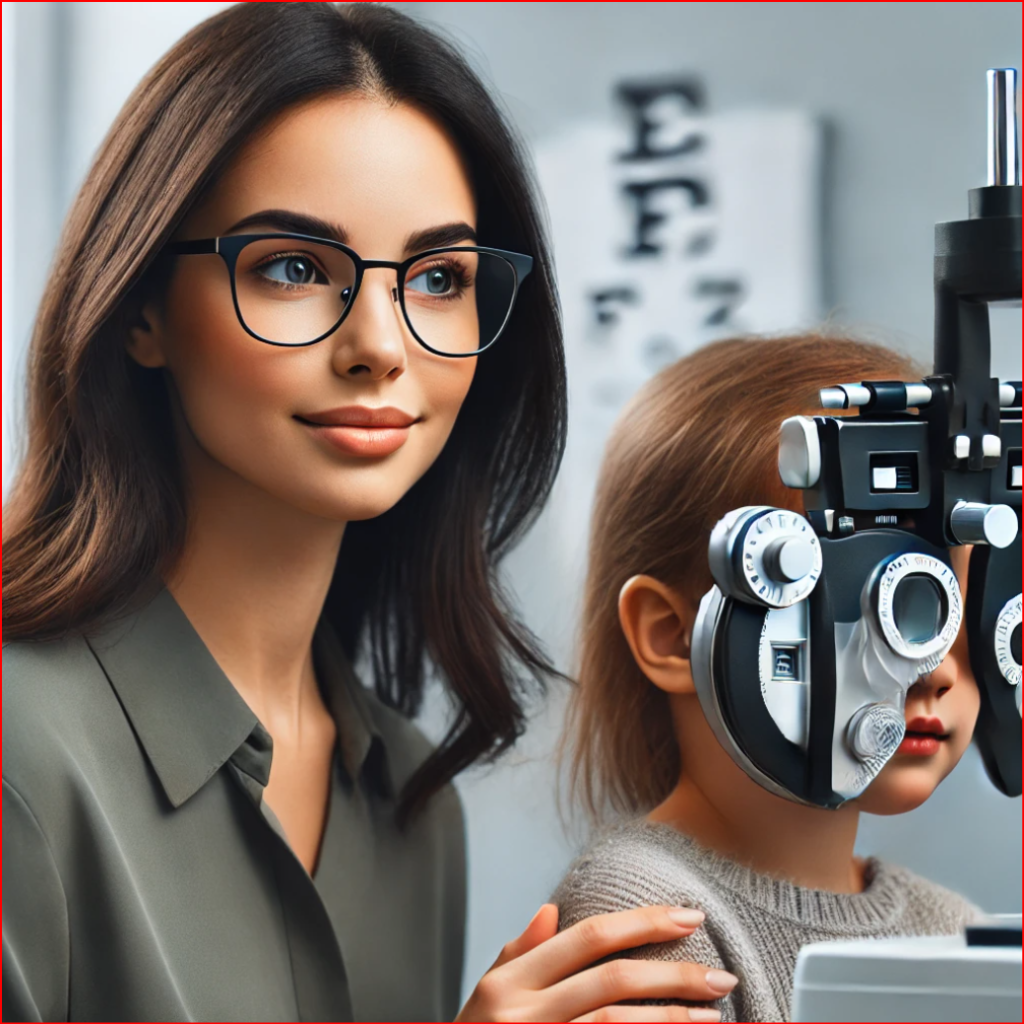Keratoconus in children is a condition where the cornea becomes thinner and gradually loses its round shape, forming a cone-like bulge. In young patients, the condition can progress quickly and significantly impair daily functioning. Early detection and personalized treatment are critical for preventing complications and supporting a child’s development.
Why It Matters in Childhood
When keratoconus appears in children, it causes the cornea to become asymmetrical and distorted. This leads to blurred or unstable vision, increased sensitivity to light, and difficulty seeing fine details. Because children’s eyes are still developing, the disease often progresses more rapidly than in adults. These changes can severely affect school performance and social participation, especially since children may not realize their vision is declining.
How Does Keratoconus Affect Daily Life?
Children with keratoconus may struggle with reading, using digital devices, or participating in group activities like sports. Bright environments can be overwhelming, and identifying faces becomes more difficult. In some cases, keratoconus can contribute to amblyopia (lazy eye), especially if diagnosed during key developmental years. If combined with other conditions such as myopia, the challenge becomes even more complex and demands personalized care.
Treatment Options for Children
In recent years, several innovative solutions have been developed to improve vision and quality of life for children with keratoconus.
One of the most effective treatments is scleral lenses. These lenses rest on the white part of the eye (sclera) rather than the sensitive cornea, creating a smooth optical surface that improves vision and comfort. This is especially beneficial for children with advanced keratoconus or significant corneal distortion. The moisture reservoir created by the lens can also help reduce dryness when properly fitted.
Another treatment is corneal cross-linking, which strengthens the cornea and helps slow the progression of the disease. This outpatient procedure combines UV light with special eye drops and is often recommended when keratoconus advances rapidly in younger patients. It’s important to note that while this treatment stabilizes the cornea, it doesn’t restore lost vision.
To learn more about the fitting process and long-term benefits of scleral lenses, visit our detailed guide: Comprehensive Eye Exam
Note: Keratoconus is a contraindication for ortho-k therapy.
When to Seek Help
If your child reports blurred vision, sensitivity to light, or trouble focusing, it’s important to consult an optometrist specializing in keratoconus. Early detection can prevent vision deterioration and allow for timely interventions. Corneal mapping is a non-invasive test that can identify keratoconus in its earliest stages and help customize the right solution for each child.
Coexisting Eye Conditions
Keratoconus often appears alongside other vision challenges such as high myopia, amblyopia (lazy eye), or strabismus (eye misalignment). In such cases, treatment plans must address both the keratoconus and the secondary conditions. Fitting scleral lenses can sometimes resolve multiple vision issues at once, improving clarity, comfort, and daily functionality.
When Two Conditions Overlap
When keratoconus and amblyopia occur together, the visual system is impacted on multiple levels. Amblyopia typically results from poor development in one eye, which becomes weaker over time. When combined with keratoconus, the problem is compounded—making it harder for the brain to interpret visual input. Addressing both conditions simultaneously, using customized lenses and vision therapy (such as patching the stronger eye), can help restore visual balance and functionality.
Diagnosis and What It Means
Keratoconus is diagnosed using advanced tools like corneal topography, which maps the shape and thickness of the cornea. This helps determine the severity of the condition and whether urgent intervention is needed. Since progression is often faster in children, early diagnosis is especially important. The results guide decisions about treatments such as cross-linking or customized contact lenses.
Scleral Lenses: A Leading Solution
Scleral lenses for keratoconus are considered one of the most effective treatments available. By resting on the sclera instead of the cornea, they avoid placing pressure on the fragile tissue and instead create a stable, smooth surface for light to pass through. These lenses not only improve vision but are also well-tolerated by children. They can also help reduce dryness and discomfort throughout the day, even in early stages of the condition.
High Myopia (Severe Nearsightedness)
Severe myopia significantly reduces distance vision and often requires high-prescription glasses. When myopia coexists with keratoconus, vision becomes even more limited. Fortunately, most keratoconus-compatible lenses, especially scleral lenses, can be customized to correct both conditions at once.
Conclusion
Keratoconus in children is a serious but manageable condition. With early diagnosis and the use of innovative solutions like custom scleral lenses, many children can maintain sharp, stable vision and live active, confident lives. If you notice signs of vision difficulty in your child, don’t wait—schedule a professional eye exam with a keratoconus expert today.

